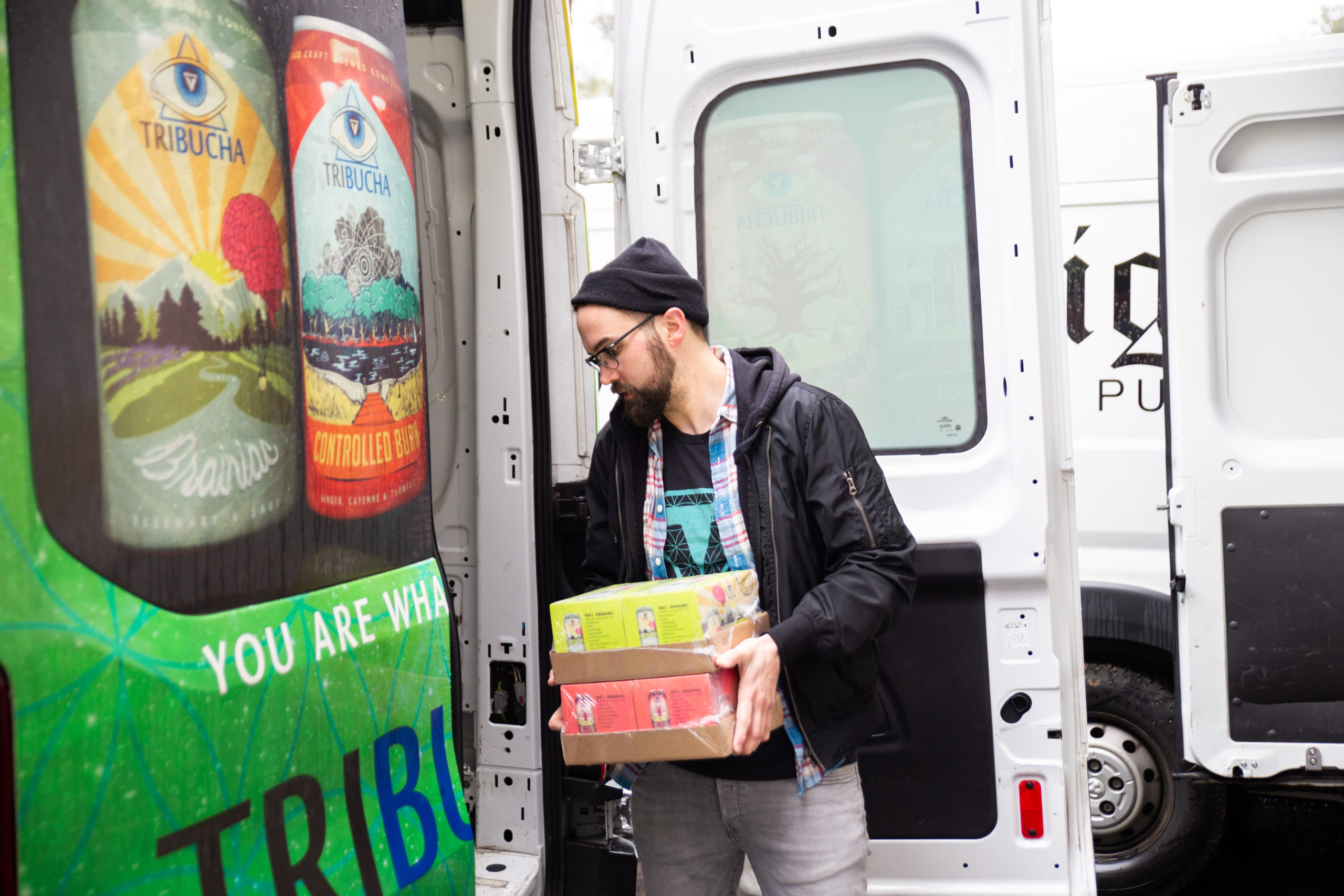The COVID-19 pandemic forced many industries to pivot their business strategies to bring in business over the past 18 months. With taprooms and tasting rooms closed to the public, many craft beverage businesses transitioned to online sales. But with breweries, wineries, and cideries again able to sell to consumers on premise, what will happen to the ecommerce side of the business? Will the alcohol industry revert back to face-to-face sales, or will it continue making the shift to more direct-to-consumer shipping via ecommerce?
Historically, many businesses within the alcohol industry relied on in-person sales. But with direct-to-consumer shipping, breweries and cideries can fulfill orders outside the standard format. Whether consumers are purchasing a product online or ordering it in the taproom, the craft beverages are shipped by a carrier to the customer at their home on a later date — allowing them to enjoy the craft beverage without ever stepping foot outside their door.
A recent consumer survey by The Sovos ShipCompliant/Harris Poll found that 84% of craft beer drinkers would like to purchase beverages online via direct-to-consumer shipping to their homes. Although the increase in demand is apparent for direct-to-consumer shipping, only 12 states and the District of Columbia currently allow beer to be shipped directly to consumers across state lines. These states include Alaska, Kentucky, Nebraska, Nevada, New Hampshire, North Dakota, Ohio, Oregon, Pennsylvania, Rhode Island, Vermont, Virginia, and the District of Columbia.
So where does that leave the alcohol industry and direct-to-consumer shipping moving forward? Let’s find out.
Tips for Taking Ecommerce to the Next Level
Although most craft businesses have reopened their taprooms and tasting rooms, more and more are considering continuing to offer their products to customers via direct-to-consumer shipping. In an already saturated market, we recommend the following tactics to take your ecommerce strategy to the next level.
Develop a Strong Marketing Campaign
When introducing a new sales channel for your business, you must make your customers aware. There’s no point in making your products available for purchase online if no one knows where to find them! For craft beverage companies, one of the most effective ways to get in front of your target audience is to drive targeted social media campaigns.
Don’t underestimate the power of social media. Using your social media platforms you can effectively reach your existing audience and capture new customers by creating a brand persona that is unique to your business. Engage with your consumer and build relationships with them online — get them used to seeing your name when they’re browsing social media on their phones. By building a strong following on social media, you’ll be able to amplify sales once you release a campaign surrounding your direct-to-consumer shipping.
List Your Products on Direct-to-Consumer Websites
One way to get started with direct-to-consumer shipping of your craft beverages is to get your brand listed on a variety of direct-to-consumer websites. Online shopping has become increasingly popular in recent years, and even more so at the height of the pandemic. Opting to list your inventory on these websites will not only make your product available to those searching for it but increase your reach to a new audience and build up a larger customer base. To get started, list your products on a few of the following direct-to-consumer websites:
- Drizly
- Bevv
- TapRm
- BeerExpress
- Craft Shack
- Tavour
- Saucey
- The Beer Connect
Along with listing your products on direct-to-consumer websites, you can sell your craft beverages on your own website’s online store.
Track and Analyze Your Ecommerce Sales
After launching your craft products on a variety of ecommerce platforms, you must continue to monitor how sales are performing. If you set it and forget it, you may not be stocking your inventory in an ideal manner to maximize sales. Instead, track and analyze which online retailers are performing the strongest. Are there specific products that are selling more than others? Understanding sales performance will allow you to make better business decisions that maximize your sales and growth, including which products to produce more of, which to stop selling online, or which sites to invest more time and effort into.
The Challenges of Direct-to-Consumer Shipping
Although direct-to-consumer shipping is an effective way to drive sales and increase brand visibility, it doesn’t come without a few challenges.
Shipping Regulations and Costs
As we mentioned above, shipping regulations for beer are determined on a state level. The majority of states require beer to be sold through the three-tier marketplace: supplies and products, distributors and wholesalers, and retailers. While certain exceptions were made surrounding the sale and delivery of alcoholic beverages during the pandemic, most states have or plan to revert back to the standard regulations. This can cause you to jump through a few hoops before being able to take advantage of direct-to-consumer sales. While beer and cider face a few obstacles with direct-to-consumer sales, it’s widely available across the wine industry allowing for easy distribution.
Along with shipping regulations, shipping costs are also a major challenge for craft beverage companies. Because beer, cider, and wine are heavy products, especially when purchased in bulk, it can be incredibly expensive to ship cases of product. While wine typically has a higher price tag, thus making the shipping seem inexpensive in comparison, beer and cider are sold at a lower price point which makes the hefty shipping costs more than a consumer may be willing to spend.
Inventory Management
When selling your craft beverage products directly in the taproom, you’re likely using inventory software to keep track of available products (and if you aren’t, you should be!). If you introduce another sales channel, such as direct-to-consumer shipping, you need to use inventory management software that will allow you to effectively track inventory for taproom sales, as well as your online sales. Without it, you may find yourself running out of products and unable to fulfill orders, affecting your customers’ satisfaction with your brand.
Despite the challenges of direct-to-consumer shipping, it offers craft beverage companies the ability to expand their reach far beyond the customers that have access to their taproom. With the desire for online sales, direct-to-consumer shipping isn’t going anywhere anytime soon.



